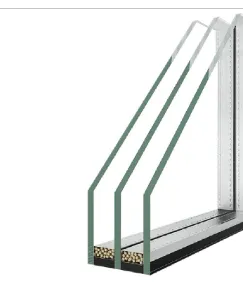

In the realm of architectural design, patterned glass has evolved into a medium where functionality meets artistic expression. From the intricate textures of spraylite pattern glass to the fluid dynamics of water pattern glass and wave pattern glass, and the structural elegance of wave pattern glass block and bamboo pattern glass, these variants redefine how light, privacy, and aesthetics coexist. Whether for residential sanctuaries or commercial showpieces, understanding these patterns unlocks the potential to transform spaces into immersive experiences.

Spraylite pattern glass features a delicate, speckled texture that mimics the soft diffusion of light through a fine mist. Created via a specialized etching or embossing process, this pattern consists of tiny, random dots or clusters that obscure visibility while maintaining a high level of light transmission. In contemporary homes, spraylite pattern glass in bathroom windows or shower enclosures provides privacy without sacrificing brightness, creating a serene, spa-like atmosphere. Commercial applications often utilize this pattern in office partitions, where its subtle texture reduces glare while allowing teams to maintain visual connectivity. The minimalist aesthetic of spraylite glass pairs seamlessly with modern design elements, such as sleek metal frames or concrete finishes, making it a staple in urban architecture.
Water pattern glass emulates the organic, rippling textures of moving water, bringing a sense of calm and dynamism to any space. This pattern typically features undulating waves, concentric circles, or abstract water-like motifs, achieved through embossing or laminating techniques. In residential settings, water pattern glass as a backsplash in a kitchen or bathroom can evoke the feeling of being near a waterfront, while in hospitality venues, it might adorn lobby walls to create a tranquil ambiance. The pattern’s ability to refract light creates shifting shadows that change throughout the day, adding a dynamic element to static surfaces. Tempered water pattern glass is ideal for high-traffic areas, ensuring durability while maintaining the design’s fluid appeal.
Wave pattern glass features continuous, rolling ridges that mimic ocean waves, offering a classic yet versatile design. This pattern is popular in both traditional and contemporary spaces, as its rhythmic lines can complement various architectural styles. In front doors, wave pattern glass provides privacy while allowing homeowners to greet visitors with a design that evokes movement and fluidity. For interior applications, such as room dividers or cabinet doors, the wave pattern diffuses light evenly, creating a soft, ambient glow. The depth of the waves can vary from subtle undulations to bold, three-dimensional textures, allowing designers to choose the intensity that best suits the space. When combined with natural materials like wood or stone, wave pattern glass enhances the organic feel of a design.
Wave Pattern Glass Block marries the aesthetic appeal of wave textures with the structural integrity of glass blocks, making it ideal for both load-bearing and decorative applications. These blocks feature internal wave patterns that diffuse light while providing privacy, making them popular for exterior walls, shower enclosures, or partition walls. The interlocking design of glass blocks ensures thermal insulation and soundproofing, while the wave pattern adds visual interest. In commercial buildings, wave pattern glass block can be used to create striking facades that balance natural light with seclusion, while in residential projects, it might form a feature wall in a living room or bathroom. The modular nature of glass blocks allows for creative configurations, such as curved walls or geometric patterns, enhancing the versatility of the wave design.
Bamboo Pattern Glass draws inspiration from the slender, segmented stalks of bamboo, offering a design that brings the tranquility of nature indoors. This pattern typically features vertical lines with periodic horizontal nodes, mimicking the structure of bamboo stems. In Asian-inspired interiors, bamboo pattern glass in sliding doors or room dividers creates a harmonious connection to nature, while in modern spaces, it adds an organic contrast to sleek, minimalist design elements. The vertical orientation of the bamboo pattern can make spaces feel taller, making it ideal for narrow hallways or rooms with low ceilings. Etched or sandblasted bamboo pattern glass is often used in combination with clear glass sections, allowing for creative layouts—such as a bamboo border framing a central clear pane.
Yes, but choose tempered or laminated bamboo pattern glass for outdoor use, and consider:
By integrating spraylite pattern glass, water pattern glass, wave pattern glass, wave pattern glass block, and bamboo pattern glass into design projects, architects and designers can create spaces that resonate with movement, nature, and modern elegance. These patterns not only enhance visual appeal but also optimize light, privacy, and functionality, proving that glass can be both a structural element and a canvas for artistic expression.